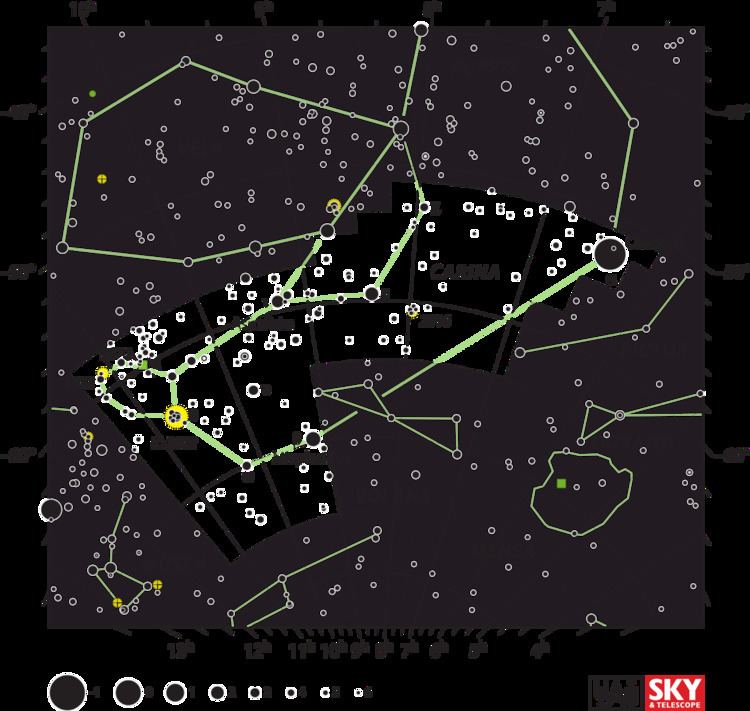Magnitude 2.76 Apparent magnitude (V) 2.76 | ||
 | ||
Similar IC 2602, Epsilon Carinae, Beta Carinae | ||
Theta Carinae (θ Car, θ Carinae) is a star in the southern constellation of Carina. With an apparent visual magnitude of 2.76, it is the brightest star in the open star cluster IC 2602. It marks the northeastern end of the Diamond Cross asterism. Parallax measurements from the Hipparcos mission place this star at a distance of about 460 light-years (140 parsecs) from Earth.
In Chinese, 南船 (Nán Chuán), meaning Southern Boat, refers to an asterism consisting of θ Carinae, V337 Carinae, PP Carinae, β Carinae and ω Carinae. Consequently, θ Carinae itself is known as 南船三 (Nán Chuán sān, English: the Third Star of Southern Boat.)
The stellar classification of this star is B0.5 Vp, which indicates this is a B-type main sequence star that is generating energy at its core through the nuclear fusion of hydrogen. The 'p' suffix means it displays peculiar features in its spectrum, which have been observed in both the optical and ultraviolet band. This might be explained by a magnetic field, yet no such measurable field has been observed. Theta Carinae is actually a single-lined spectroscopic binary with a period of 2.2 days; the shortest known orbital period among massive stars. The close orbit means that a mass transfer between the two components may have occurred, which could explain the peculiarities of the spectrum.
The primary component in this system is a blue straggler, which is a type of star that is created by the interaction between two or more stars. Most likely the source of this mass transfer was the secondary member of the system, and what is now the primary star was probably once the secondary component. At an estimated age of 4 million years, this star is much younger than the age of the surrounding IC 2602 cluster, which is consistent with it being a straggler. At present the primary star has about 15 times the mass of the Sun and five times the Sun's radius. It has an intensely hot outer envelope that is radiating more than 25,000 the Sun's luminosity at an effective temperature of 31,000 K, giving it a blue-white glow. When the primary reaches the age of around 11 million years, it will expand to the point where it will begin to transfer part of its mass back to its companion. Little is known about this secondary component, but it may be an F-type star with a luminosity less than 1% of the primary.
